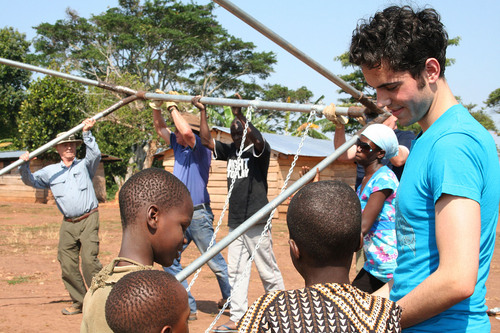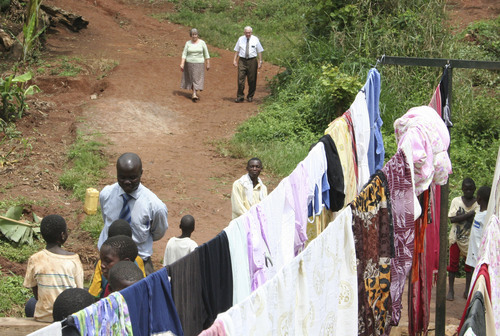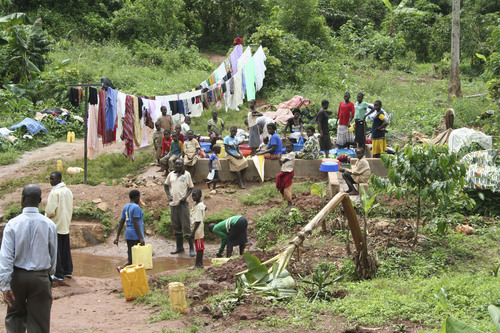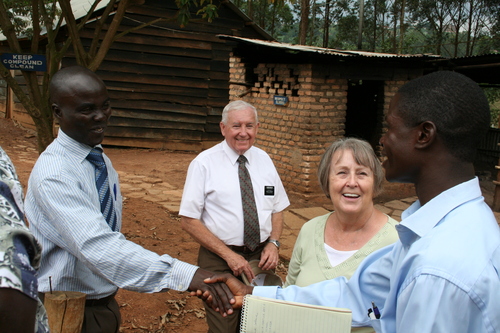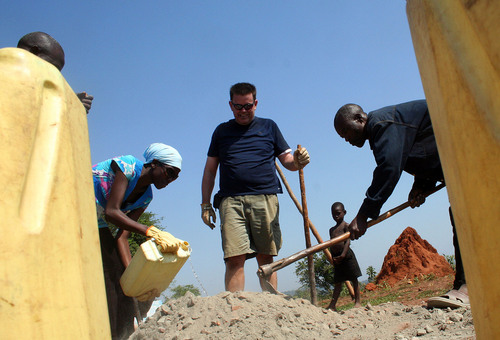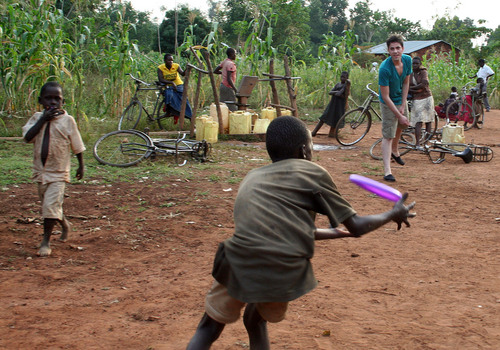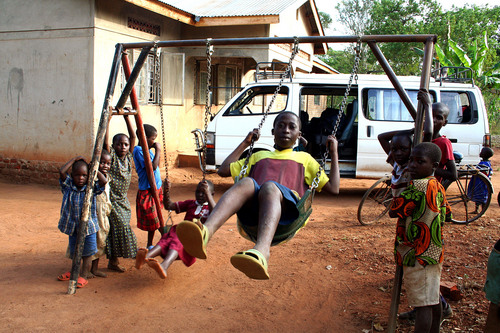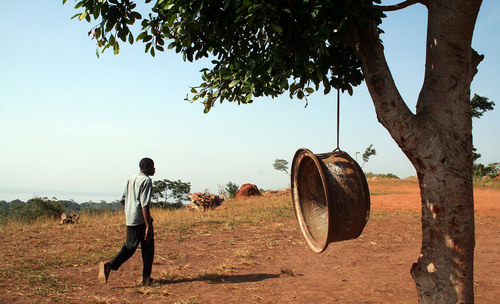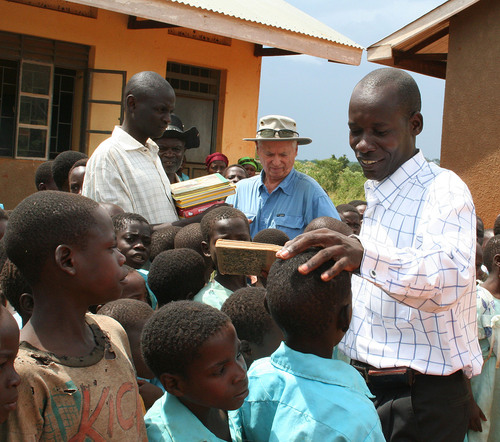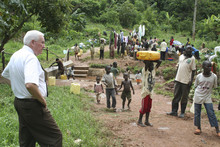This is an archived article that was published on sltrib.com in 2014, and information in the article may be outdated. It is provided only for personal research purposes and may not be reprinted.
David Stewart felt ill-equipped to preach his Mormon faith in recently opened Russia in 1992, when he arrived there as a young missionary. Sure, he had learned the language, but nothing of the culture he was about to engage. And it certainly wasn't like being at home in Maryland.
Stewart's mission experience didn't match the breathless tales of international growth he had read about in official church magazines, which, he says, focused on "inspiring stories of exceptional members."
The earnest missionary also wondered why other religions — such as Seventh-day Adventists and Jehovah's Witnesses — had so many more adherents than Mormonism and seemed to be better at reporting actual membership figures and retaining converts.
Such questions simmered in Stewart's consciousness until 1999, when he launched the website cumorah.com to collect data on every country, including cultural traditions and LDS retention figures.
After a decade, Stewart, a Las Vegas physician, enlisted the help of Matt Martinich, an independent researcher who was a Mormon missionary in South Korea from 2004 to 2006. Martinich had conducted his own survey of LDS growth and published a blog — ldschurchgrowth.blogspot.com — on the topic.
Now the two have produced a 1,900-page, two-volume, exhaustive survey, titled "Reaching the Nations: International Church Growth Almanac 2014."
The encyclopedic endeavor is based on official reports the Utah-based Church of Jesus Christ of Latter-day Saints gives out every year, information on the faith's website as well as "literally thousands of reports we have obtained from members and church leaders over the years," Martinich says, "whether this has been from email or online correspondence to personal interviews, members completing surveys on the church in their area, or us finding information through social media outlets and blogs maintained by missionary families."
Martinich, who is working toward a doctorate in clinical psychology at the University of the Rockies, says "Reaching the Nations" marks the "first thorough, analytical study of how contextual factors have influenced LDS growth trends and with the candor to admit where the church has a poor prognosis to achieve 'real growth.' "
Isolated studies have looked at particular nations, he says, "but nothing has looked at the church in every sovereign country with over 10,000 inhabitants."
This work points out past shortcomings of the LDS missionary program and offers recommendations for how to improve the effectiveness of proselytizing, the authors say, but is not meant as a critique.
"Our goal is not to be prescriptive," Stewart says, "but to provide accurate data for people to come up with solutions themselves. I think people are better equipped to make those assessments and adjust their expectations if they have the big picture."
In the almanac's introduction, premier LDS sociologist Armand Mauss praises the undertaking's independence, scope, candor and sources, and predicts it will be seen for years as "the most reliable and indispensable source available."
It couldn't come at a more opportune time.
The Deseret News' annual "Church Almanac" will no longer be published, Martinich was told, though the News' managing editor, Rick Hall, could not confirm that, saying only that "to the best of my knowledge, we have not finalized a decision."
Though both researchers are practicing Latter-day Saints, the LDS Church "cannot vouch for its contents or conclusions," church spokesman Cody Craynor says. "Official church statistics and related context are continually updated at mormonnewsroom.org."
Mormon leaders have conceded that member retention remains a problem for the faith and have invested considerable resources in trying to remedy it.
Right now, the LDS Church pegs its global membership at 15 million.
Here are some of the almanac's findings:
• About 30 percent of Mormons worldwide — or 4.5 million — regularly attend church meetings.
• Between 2000 and 2010, LDS congregational growth was most rapid in Delaware (63 percent), Virginia (33 percent), North Carolina (32 percent), and Texas and Tennessee (29 percent). Congregational decline occurred in Louisiana (down 18 percent), Connecticut and New York (down 6 percent), and New Jersey (down 3 percent).
• The Philippines is home to the largest population of Latter-day Saints outside the Americas — 675,166 as of 2012.
• There are at least seven countries or dependencies with member activity rates of 15 percent or less — Chile, Portugal, South Korea, Panama, Hong Kong, Croatia and Palau.
• Within the past three years, the lowest convert-retention rates have appeared to occur within Latin America, where many nations have experienced no noticeable increase in the number of active Mormons within this period.
• Ivory Coast appears to have the most successful LDS missionary efforts within the past few years. Only French-speaking African members serve there due to safety and security concerns for non-Africans in this country. Explosive growth has occurred within the past two years. During 2013, the number of Mormon wards and branches, or congregations, jumped from 53 to 72; a 36 percent leap.
• A big obstacle to LDS conversions can be the "ethnoreligious" ties that particular ethnic groups exhibit toward traditional faiths. Examples include ethnic Greeks with the Greek Orthodox Church, the Fulani people of West Africa with Islam, and ethnic Thais with Buddhism. Greece, for example, has seen little Mormon growth notwithstanding proselytizing missionaries serving in the country for more than two decades. There continue to be more active non-Greeks than ethnic Greeks in the LDS Church in Greece, and nominal membership remains under 1,000.
• Tribalism has been a challenge in some areas of the world. In the South Pacific's Vanuatu, the LDS Church must obtain permission from village chiefs to engage in missionary activity and hold services. Tribal conflicts have resulted, at times, in the church closing member groups and withdrawing missionaries.
• The first full-time Mormon missionary from China completed his service in 2006. By the end of 2010, 42 missionaries from mainland China were serving full-time LDS missions, many in the United States and Canada.
• In 2010, India had more than 150 Mormon missionaries. That number has been greatly reduced due to visa restrictions, but it is close to being self-sufficient with local missionaries.
• In Spain, assimilating Latin Americans and Spaniards into the same congregations presents the most widespread ethnic integration issue. Some congregations with an overrepresented Latin American presence may run into difficulties baptizing and keeping active a Spaniard minority.
• The LDS Church has cut the number of full-time missionaries assigned to Belgium to approximately a third of the levels reported in the 1980s and '90s. Despite this reduction, Belgium remains reliant on foreign missionaries because few locals serve Mormon missions.
• The United Arab Emirates boasts an LDS stake, four wards and two branches — partly because this Persian Gulf nation provides greater religious freedom for Christians than most Middle Eastern countries.
• The LDS "Word of Wisdom" (a health code urging Mormons to eschew alcohol, tobacco, coffee and tea) and the "law of chastity" (forbidding sex outside marriage) perhaps present the greatest challenges to new converts and seasoned members.
• In sub-Saharan Africa, there have been many instances in which individuals cannot get baptized in some countries because they participate in polygamous marriages per local customs and traditions. These individuals have to divorce polygamous spouses to become Mormons — apparently a rare move. The LDS Church stopped practicing plural marriage more than a century ago.
• Countries with the most members and no LDS temple in place, under construction or announced: Nicaragua (80,605 members), Zimbabwe (23,117), Russia (21,709), Papua New Guinea (21,265) and Puerto Rico (21,174).
Twitter: @religiongal —
More online
For online copies of "Reaching the Nations," go to cumorah.com —
LDS activity rates
U.S. • 40 percent
Mexico • 20 to 25 percent
Brazil • 25 percent
Chile • 12 percent
New Zealand • 40 to 45 percent
Tonga • 30 to 35 percent
Germany • 25 percent
Ireland • 35 percent
Japan • 15 to 20 percent
Nigeria • 50 to 55 percent
Source: "Reaching the Nations: International Church Growth Almanac 2014"


